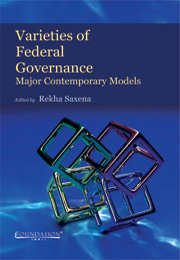Book contents
- Frontmatter
- Contents
- List of Contributors
- Foreword
- Acknowledgements
- Introduction
- I Theoretical and Comparative Dimensions
- II Presidential Federal Systems
- III Commonwealth Parliamentary Federations
- IV Non-Commonwealth Parliamentary Federations in Afro-Asia
- V European Parliamentary Federations
- 15 The German Federal System and its Reforms: Structures, Taboos and the ‘Shylock Principle’
- 16 The Belgian Federation: Tools of Appeasement, Instruments of Confrontation
- 17 Federalism as Ideology and as Institutional Form in the Spanish Estado de las Autonomías (1977–2004)
- VI Devolutionary Systems
- VII Supranational Confederalism/Federalism?
16 - The Belgian Federation: Tools of Appeasement, Instruments of Confrontation
from V - European Parliamentary Federations
Published online by Cambridge University Press: 05 June 2012
- Frontmatter
- Contents
- List of Contributors
- Foreword
- Acknowledgements
- Introduction
- I Theoretical and Comparative Dimensions
- II Presidential Federal Systems
- III Commonwealth Parliamentary Federations
- IV Non-Commonwealth Parliamentary Federations in Afro-Asia
- V European Parliamentary Federations
- 15 The German Federal System and its Reforms: Structures, Taboos and the ‘Shylock Principle’
- 16 The Belgian Federation: Tools of Appeasement, Instruments of Confrontation
- 17 Federalism as Ideology and as Institutional Form in the Spanish Estado de las Autonomías (1977–2004)
- VI Devolutionary Systems
- VII Supranational Confederalism/Federalism?
Summary
Introduction
Over the last 40 years, the Belgian unitary and relatively centralized system has gradually been transformed into one of the most decentralized federations. The Belgian experience illustrates how a mixture of self-rule and shared-rule has allowed – sometimes with significant tensions – several cultural communities to share a common political space. Belgian federalism offers a number of lessons and warnings concerning the role which institutional design may play not only in fostering accommodation, but also in generating confrontation.
Tensions between political parties representing the two main sociocultural groups (the Flemish and the French-speakers) were so great following the 2007 federal elections, that it took over nine months to form a governing coalition. The ensuing government was marred by so-called ‘inter-community’ conflicts, which only, temporarily, receded in the face of the 2008–2009 financial crisis. The coalition fell apart in 2010, again over disagreements between the Flemish and the French-speaking parties, mainly concerning the splitting of an electoral ridding. The result of the insuing election was that the main party in Parliament is a Flemish nationalist, with a long-term project for Flemish autonomy. While there is no clear, structured, project for secession (or implosion) of this essential ‘two-unit’ bipolar federation, many observers are doubtful that the country will remain united over the next few decades. Decoding the underlying reasons for this nearly schizophrenic incapacity to live together – or to be truly be apart – requires an appreciation of the sociological and historical background of this small country, as well as an understanding of its complex and fascinating institutional set-up.
- Type
- Chapter
- Information
- Varieties of Federal GovernanceMajor Contemporary Models, pp. 344 - 377Publisher: Foundation BooksPrint publication year: 2011
- 1
- Cited by



